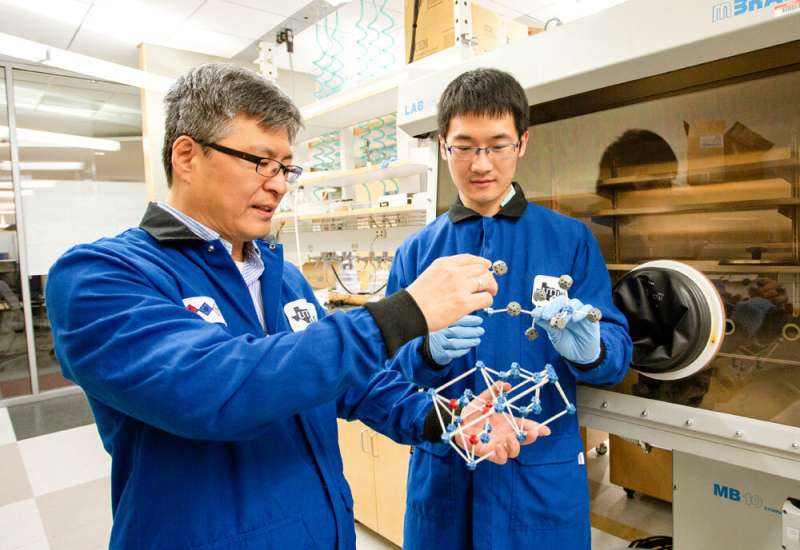Researchers discover the key to safer batteries lies on the surface

Everyone wants smaller, cheaper, longer-lasting batteries. Find one that also has greater safety and stability, and you have the Holy Grail of better batteries.
Lithium-ion batteries have been the hands-down favorite for smartphones, tablets, laptops, cameras and rechargeable power tools for decades. But they also have drawbacks, such as "thermal runaway" in which a battery fails—or catches fire—due to the buildup of too much heat.
For years, researchers have been looking for the source of the heat problem and how to fix the associated volatility. After three years of material simulation, synthesis, characterization and battery performance tests, University of Texas at Dallas researchers have discovered that the problem with lithium-ion batteries isn't inside the battery materials.
"It turns out only the surface of the battery cathode materials is the problem," said Dr. Kyeongjae "K.J." Cho, professor of materials science and engineering in the Erik Jonsson School of Engineering and Computer Science. "The inside is OK. This gives us great hope we can figure out how to stabilize the surface and make really high-capacity batteries a reality."
Cho and his colleagues described their findings in the Jan. 10 print edition of the journal Advanced Energy Materials.
Cho said high-energy-density batteries come at a high price: increased volatility.
"When a battery is constantly charged and recharged, the material begins to degrade. Released energy causes heating, and the battery catches fire. That's essentially the safety problem," he said.
The good news?
"Only the surface of the battery materials is unstable and unsafe. If that can be addressed, it can be fixed," he said.
During the constant cycles of charging and recharging, oxygen gases are released from the surface of battery materials. During that process, the pathway for lithium-ion transportation from the interior to the exterior can get blocked by metallic nickel dust, which is generated along with gas releasing, Cho said.
"When there is a blockage, there's no way to transfer lithium-ions at the surface that want to come in and out. This leads to rapid decrement of battery capacity. As the amount of heat increases, the chances of fire and explosions also increase," he said.
That simple, yet profound, discovery at the surface of the battery materials might change the way manufacturers build them. Cho suggests perhaps a well-designed oxide coating could be added on the battery surface.
"Modifications could lead to maintaining a charge for a longer period of time," Cho said. "This is the problem industry is trying to solve right now for the next generation of lithium-ion battery. It's very exciting, and we are working on the next stage."
Fantai Kong Ph.D.'17, lead author of the study and Cho's former student, is a senior engineer with Hunt Energy Enterprises in Dallas working on large-scale energy storage and material projects. He said solving the heat problem in batteries could lead to a 20 percent to 30 percent higher capacity.
"We are right at the threshold of commercial viability. There could be a commercial product in a few years," Kong said.
Based on the new findings, Cho said there is some industry interest in working with the UT Dallas group on next-generation cathode materials for electric vehicle batteries. Cho's group also is collaborating with the U.S. Naval Research Laboratory on a follow-up research project to increase the capacity and safety of cathode materials.
More information: Fantai Kong et al. Kinetic Stability of Bulk LiNiO2 and Surface Degradation by Oxygen Evolution in LiNiO2 -Based Cathode Materials, Advanced Energy Materials (2018). DOI: 10.1002/aenm.201802586


















